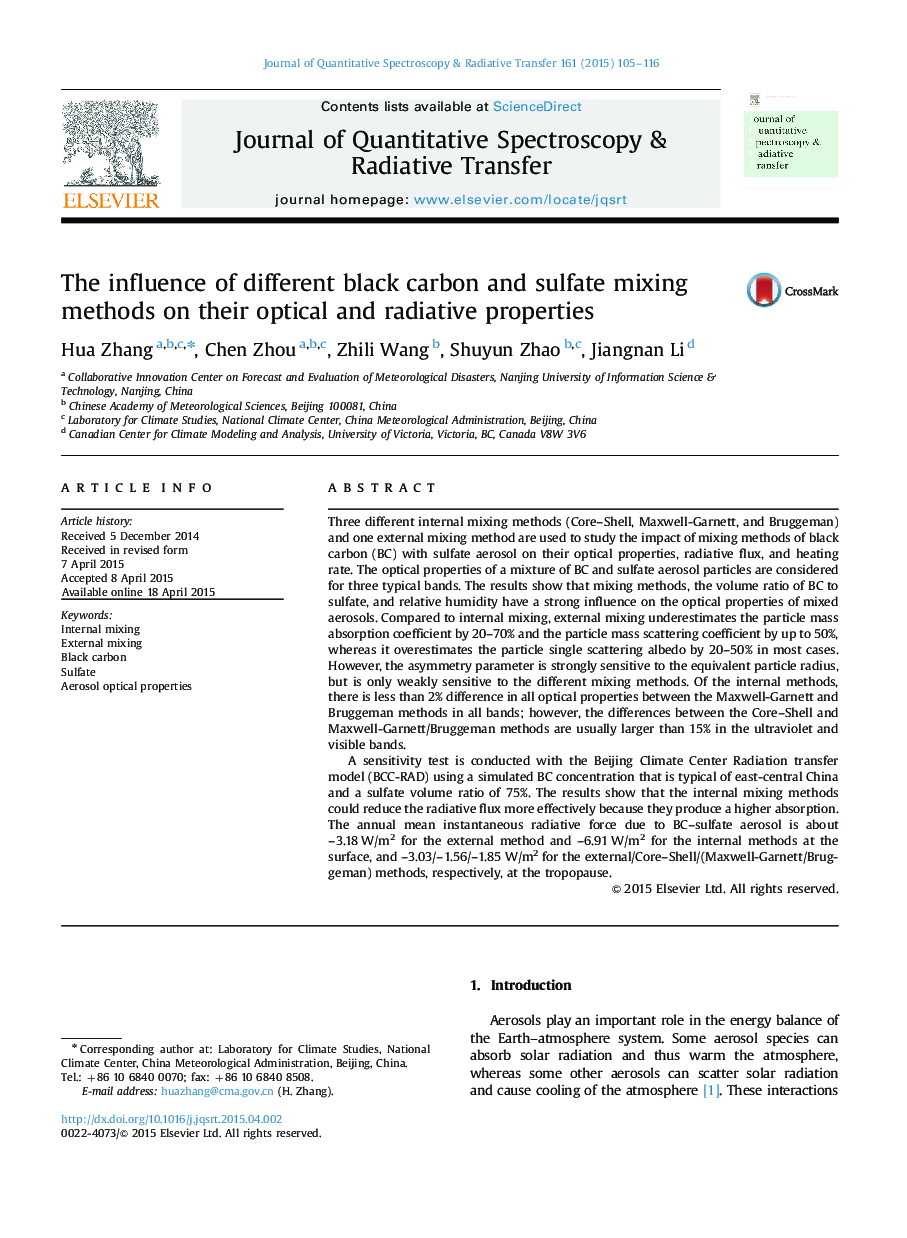| کد مقاله | کد نشریه | سال انتشار | مقاله انگلیسی | نسخه تمام متن |
|---|---|---|---|---|
| 5427887 | 1508654 | 2015 | 12 صفحه PDF | دانلود رایگان |
- The aerosol optical properties with different mixing methods are compared.
- The factors affecting the optical properties are investigated in detail.
- Great differences exist among different mixing methods in radiative calculations.
Three different internal mixing methods (Core-Shell, Maxwell-Garnett, and Bruggeman) and one external mixing method are used to study the impact of mixing methods of black carbon (BC) with sulfate aerosol on their optical properties, radiative flux, and heating rate. The optical properties of a mixture of BC and sulfate aerosol particles are considered for three typical bands. The results show that mixing methods, the volume ratio of BC to sulfate, and relative humidity have a strong influence on the optical properties of mixed aerosols. Compared to internal mixing, external mixing underestimates the particle mass absorption coefficient by 20-70% and the particle mass scattering coefficient by up to 50%, whereas it overestimates the particle single scattering albedo by 20-50% in most cases. However, the asymmetry parameter is strongly sensitive to the equivalent particle radius, but is only weakly sensitive to the different mixing methods. Of the internal methods, there is less than 2% difference in all optical properties between the Maxwell-Garnett and Bruggeman methods in all bands; however, the differences between the Core-Shell and Maxwell-Garnett/Bruggeman methods are usually larger than 15% in the ultraviolet and visible bands.A sensitivity test is conducted with the Beijing Climate Center Radiation transfer model (BCC-RAD) using a simulated BC concentration that is typical of east-central China and a sulfate volume ratio of 75%. The results show that the internal mixing methods could reduce the radiative flux more effectively because they produce a higher absorption. The annual mean instantaneous radiative force due to BC-sulfate aerosol is about -3.18Â W/m2 for the external method and -6.91Â W/m2 for the internal methods at the surface, and -3.03/-1.56/-1.85Â W/m2 for the external/Core-Shell/(Maxwell-Garnett/Bruggeman) methods, respectively, at the tropopause.
Journal: Journal of Quantitative Spectroscopy and Radiative Transfer - Volume 161, August 2015, Pages 105-116
